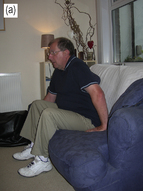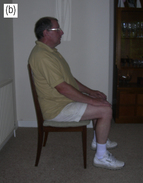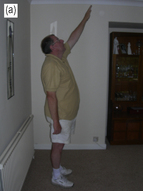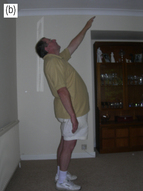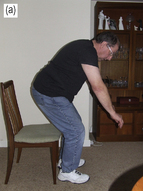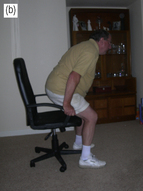CHAPTER EIGHT Prescription of Home Exercise Programmes
This chapter discusses the prescription of exercises to be carried out at home, and the importance of home exercise programmes in producing and maintaining change in exercise ability. Considerations specific to home exercise design, including equipment and safety, are highlighted. The challenges of monitoring and progression of home exercises are addressed, and some examples of exercises suitable for the home are given.
PRINCIPLES OF HOME EXERCISE DESIGN
Clear instruction
It is important that home exercises are performed correctly, and sufficient time should be allocated during the treatment session to ensure that the exercises are understood. Most physiotherapists provide a handout of the home exercise programme with a written explanation and pictures, and computer packages are available to help produce these. Although these handouts are a useful ‘aide-memoire’ they should never be given in place of an explanation and demonstration, and should be individually tailored to the patient’s requirements. This is particularly important if the exercises to be carried out independently are not the same as the exercises that have been carried out during the supervised treatment with the physiotherapist.
When teaching exercises the principles of motor learning (Chapter 2) should be considered, and the exercise should be explained, demonstrated and the patient asked to carry it out for themself as part of the learning process. Breaking down the exercise into its component parts, by teaching the starting position and then the activity required, may make it easier for the patient to remember the exercise correctly. It is advisable to be specific about the starting position for each exercise, as a change in starting position may change the effect of an exercise. For example, if using ‘sitting’ as the starting position, the type of chair to be used should be specified; sitting in an old armchair which may be quite low will produce more hip and knee flexion than sitting on a firm dining chair (Figure 8.1).
The home exercises should be reviewed at the next visit. This is best done by asking the patient to demonstrate the exercises that they have been performing independently. It is not sufficient to ask if they are doing the exercises, as what is important is how they are doing the exercises. It is quite possible that a patient may be performing the exercises regularly but they may be ineffective (Figure 8.2), or more importantly unsafe (Figure 8.3), due to a small alteration in the way that the patient is carrying out the exercise.
